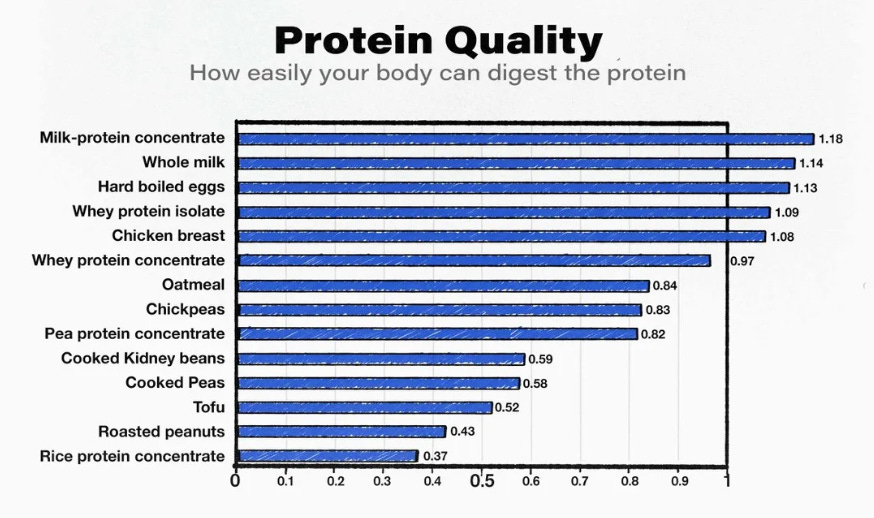· workouts · 8 min read
Conditioning For Strongman: The Ultimate Guide
Welcome to the world of strongman training, where power, strength, and athleticism collide in the most awe-inspiring way. If you've ever felt limited by traditional gym routines, this article is for you.
Welcome to the world of strongman training, where power, strength, and athleticism collide in the most awe-inspiring way. If you’ve ever felt limited by traditional gym routines, this article is for you. Learn how conditioning for strongman can unlock your full potential and take your fitness game to a whole new level.
What is Strongman Conditioning?
What is Strongman Conditioning? Strongman conditioning incorporates a combination of cardiovascular endurance, strength, and power training to effectively prepare for the physical demands of strongman competitions.
Why is Conditioning Important for Strongman?
Conditioning is crucial for strongmen to endure the physical demands of their sport. It plays a vital role in enhancing stamina, cardiovascular health, and overall performance, allowing competitors to excel in various events. Strongman conditioning involves a combination of strength, power, and endurance training, ensuring that athletes can maintain peak performance throughout grueling competitions.
In 1977, the World’s Strongest Man competition featured a groundbreaking event that tested competitors’ conditioning by incorporating a medley of strength and endurance challenges, setting a new standard for the sport. This event showcased the importance of conditioning for strongmen and how it can contribute to their success in the sport.
What are the Demands of Strongman Events?
Strongman events require a unique combination of raw strength, power, endurance, and mental toughness. These competitions often involve the lifting and moving of heavy and awkward objects, such as farmer’s walk, yoke walk, and atlas stones. Furthermore, strongman events challenge competitors to perform under a variety of conditions, including uneven terrains and unpredictable weather. A pro-tip to prepare for the demands of each strongman event is to incorporate event-specific training, ensuring a well-rounded approach to conditioning.
How to Train for Strongman Conditioning?
Building strongman conditioning is crucial for success in the challenging sport of strongman. In this section, we will discuss the various methods and techniques that can help you train for strongman conditioning. From focusing on compound movements to incorporating cardiovascular training, utilizing strongman equipment, and implementing high-intensity interval training, we will cover all aspects to help you develop the strength, stamina, and endurance needed to excel in the world of strongman.
1. Focus on Compound Movements
- Engage in multi-joint exercises like squats, deadlifts, and overhead presses for overall strength.
- Perform movements that engage multiple muscle groups simultaneously to mimic real-life activities.
- Focus on Compound Movements to enhance coordination, stability, and muscle mass.
2. Incorporate Cardiovascular Training
- Start with Low-impact Cardio: Begin with activities like cycling or swimming to ease into cardiovascular training.
- Gradually Increase Intensity: Progress to higher intensity workouts such as sprints or battle ropes to enhance cardiovascular endurance.
- Incorporate Variety: Include different forms of cardio like rowing or stair climbing to prevent monotony and work various muscle groups.
- Mindful Recovery: Allow sufficient recovery time between cardiovascular training sessions to prevent overtraining and support muscle repair.
3. Utilize Strongman Equipment
- Select the appropriate strongman equipment based on your training goals, such as logs, atlas stones, and farmer’s walk handles.
- Ensure proper technique and form when using the equipment to prevent injuries and maximize effectiveness.
- Incorporate a variety of strongman equipment into your training routine to target different muscle groups and movement patterns.
- Gradually increase the intensity and resistance when utilizing strongman equipment to continuously challenge your strength and conditioning.
True story: When I began utilizing strongman equipment in my training, I experienced significant improvements in my overall strength and endurance. The incorporation of atlas stones and farmer’s walk handles added a new dimension to my workouts, enhancing both my physical and mental toughness.
4. Implement High-Intensity Interval Training
- Choose high-intensity exercises: Select exercises like sprints, kettlebell swings, or burpees for short bursts of maximum effort.
- Set work and rest intervals: Alternate between intense work periods and recovery periods, like 30 seconds of work and 60 seconds of rest.
- Progress gradually: Start with fewer intervals and gradually increase the intensity and duration over time.
- Focus on form: Ensure proper technique during each interval to prevent injuries and maximize results.
What are the Benefits of Strongman Conditioning?
Strongman conditioning is a crucial aspect of training for any aspiring strongman athlete. This section will delve into the benefits of incorporating strongman conditioning into your training regimen. From increased endurance and improved recovery time to enhanced mental toughness and overall performance, we will explore the various advantages that come with a well-rounded conditioning program for strongman athletes. By the end, you’ll have a better understanding of how this type of training can elevate your performance in the world of strongman competitions.
1. Increased Endurance
- Focus on both aerobic and anaerobic exercises to increase endurance in both your cardiovascular and muscular systems.
- Incorporate long-distance runs, cycling, and swimming into your training regimen to improve overall endurance.
- Perform high-repetition sets with moderate weights to enhance your muscular stamina.
- Utilize strongman training implements such as tire flips and farmer’s walks to develop functional strength and endurance.
2. Improved Recovery Time
- Rest and Recovery: Adequate rest between training sessions is crucial for improved recovery time.
- Nutrition: Consume protein and carbohydrates post-workout to facilitate muscle recovery and replenish glycogen stores.
- Active Recovery: Engage in light physical activities like walking or yoga to promote blood flow and aid in recovery.
- Sleep: Prioritize quality sleep as it is essential for muscle repair and overall recovery.
Did you know? Proper recovery techniques can significantly reduce the risk of injury in strongman conditioning.
3. Enhanced Mental Toughness
- Develop resilience through mental conditioning exercises, such as visualization and positive self-talk.
- Embrace discomfort by training in adverse conditions or pushing through mental barriers during workouts.
- Seek challenges to cultivate mental grit and adaptability.
- Practice mindfulness to manage stress and stay focused during intense training.
A true illustration of enhanced mental toughness is demonstrated by strongman athlete Eddie Hall. Despite a severe injury, he persevered, maintaining unwavering determination, and ultimately securing the title of World’s Strongest Man.
4. Better Overall Performance
- In order to improve overall performance, focus on multi-joint exercises to enhance strength and power.
- Additionally, include specific training for your specific event to refine technique and skill.
- To optimize training phases and peak during competitions, implement periodization techniques.
- It is also important to prioritize recovery and ensure adequate nutrition to support muscle growth and repair.
How to Prevent Overtraining in Strongman Conditioning?
In the world of strongman training, conditioning is a crucial aspect for building strength and endurance. However, like any physical activity, overtraining can lead to injury and hinder progress. That’s why it’s important to know how to prevent overtraining in strongman conditioning. In this section, we’ll discuss four key strategies to help you train effectively while avoiding burnout and injury. These include listening to your body, properly fueling and hydrating, incorporating rest and active recovery days, and varying your training intensity and volume. By following these tips, you can maintain a balanced and sustainable training routine for optimal results.
1. Listen to Your Body
- Pay attention to physical cues, including soreness, fatigue, and discomfort.
- Observe mental and emotional signals, such as low motivation or irritability.
- Adjust training intensity or volume based on your body’s responses.
- Seek professional guidance if experiencing persistent or concerning symptoms.
2. Properly Fuel and Hydrate Your Body
- Consume a balanced diet with adequate carbohydrates, proteins, and healthy fats to properly fuel your body.
- Stay properly hydrated by drinking sufficient water before, during, and after workouts.
- Avoid excessive consumption of sugary or caffeinated drinks, as they can lead to dehydration.
- Consider consuming electrolyte-rich drinks to replenish minerals lost through sweat.
Remember, proper nutrition and hydration are crucial for optimal performance and recovery in strongman conditioning.
3. Incorporate Rest and Active Recovery Days
- Listen to Your Body: Pay attention to signs of fatigue, soreness, or decreased performance. Adjust your training intensity or take an extra rest day if needed.
- Properly Fuel and Hydrate Your Body: Consume a balanced diet rich in nutrients and stay hydrated to support recovery and optimize performance.
- Incorporate Rest and Active Recovery Days: Make sure to schedule regular rest days and include light activities such as walking, yoga, or stretching to promote muscle recovery.
- Vary Your Training Intensity and Volume: Alternate between high-intensity workouts and lighter sessions to prevent overtraining and minimize the risk of injury.
Remember, proper rest and recovery are essential components of effective conditioning for strongman competitions.
4. Vary Your Training Intensity and Volume
- Adjust the intensity and volume of your workouts regularly to keep your body challenged and prevent plateauing.
- Increase the weight, reps, or sets for certain exercises while decreasing them for others to create variety and avoid overtraining.
- Periodize your training by alternating between phases of high intensity and low volume, and moderate intensity and high volume.
Frequently Asked Questions
What is conditioning for strongman?
Conditioning for strongman refers to the specific training and preparation methods used to improve strength, endurance, and overall physical conditioning for competing in the sport of strongman.
Why is conditioning important for strongman?
Strongman competitions require a combination of strength, endurance, and agility. Conditioning helps build the necessary physical qualities to excel in these events and prevent injury.
What types of conditioning exercises are beneficial for strongman?
Some common conditioning exercises for strongman include farmers walks, tire flips, sled pushes, and log carries. These exercises simulate the types of movements and challenges faced in competitions.
How often should I incorporate conditioning into my training for strongman?
The frequency of conditioning workouts will depend on your current fitness level and competition goals. However, it is generally recommended to incorporate conditioning 2-3 times per week in addition to strength training.
Can I do conditioning for strongman even if I am not training for a competition?
Yes, conditioning exercises for strongman can be a great addition to any fitness routine. They can help improve overall strength, endurance, and functional movement patterns.
Do I need any special equipment for conditioning for strongman?
While some strongman specific equipment, such as atlas stones or log bars, may be beneficial, many conditioning exercises can be done with basic gym equipment such as kettlebells, dumbbells, and tires.






